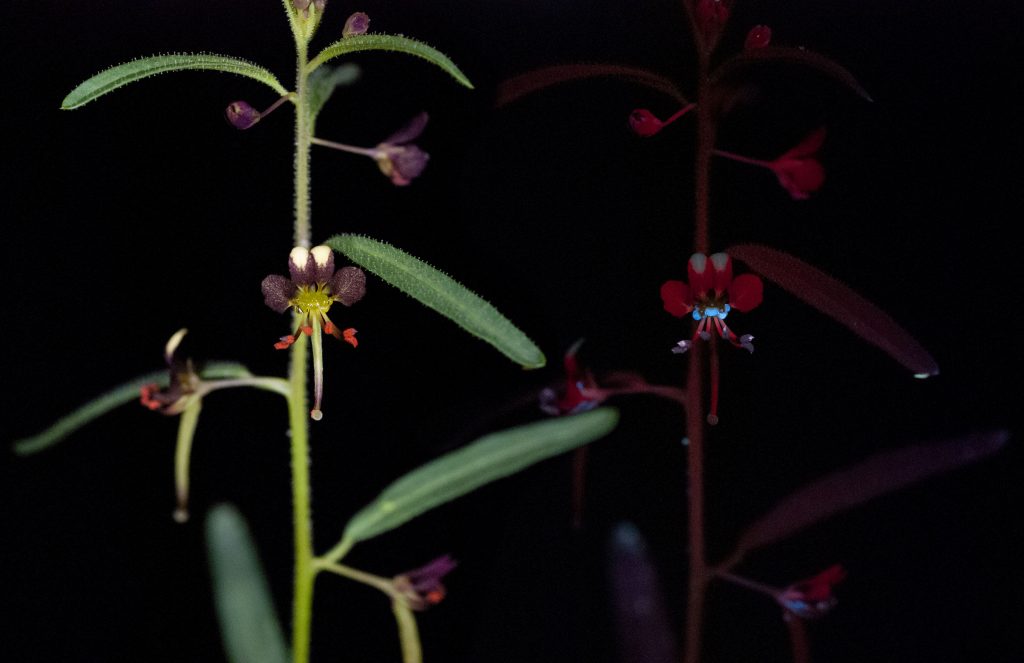| Submitted by: | Brandi Zenchyzen |
| Department: | Biological Sciences |
| Faculty: | Science |
| Collaborator: | John Acorn |
| Department: | Renewable Resources |
| Faculty: | Agricultural, Life & Environmental Sciences |
Although floral nectar is a crucial reward for pollinators, we are only beginning to understand the complex chemical, biomolecular, and microbial composition of nectar and how these components contribute to pollinator interactions. Under visible light, the nectar of Cleome violacea blends in with the flower (left); however, under ultraviolet radiation, the nectar fluoresces vibrant blue (right). In the nearly 50 years following the first mention of this fascinating phenomenon, nectar fluorescence is rarely mentioned in the scientific literature and has not been documented in vivo colour. As such, we present the first in vivo colour images of ultraviolet-fluorescent nectar. Like nectar-related research, biofluorescence is an emerging area of study with numerous recent and intriguing findings across animals. Further investigation is required to determine if ultraviolet-fluorescence in plants functions as a visual cue for pollinators.

